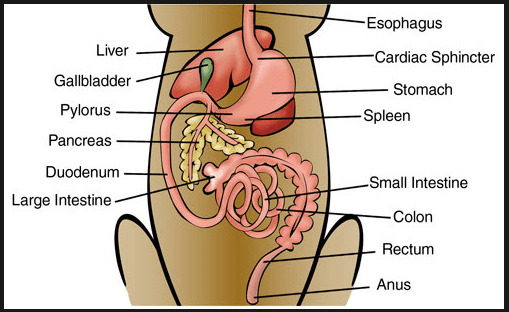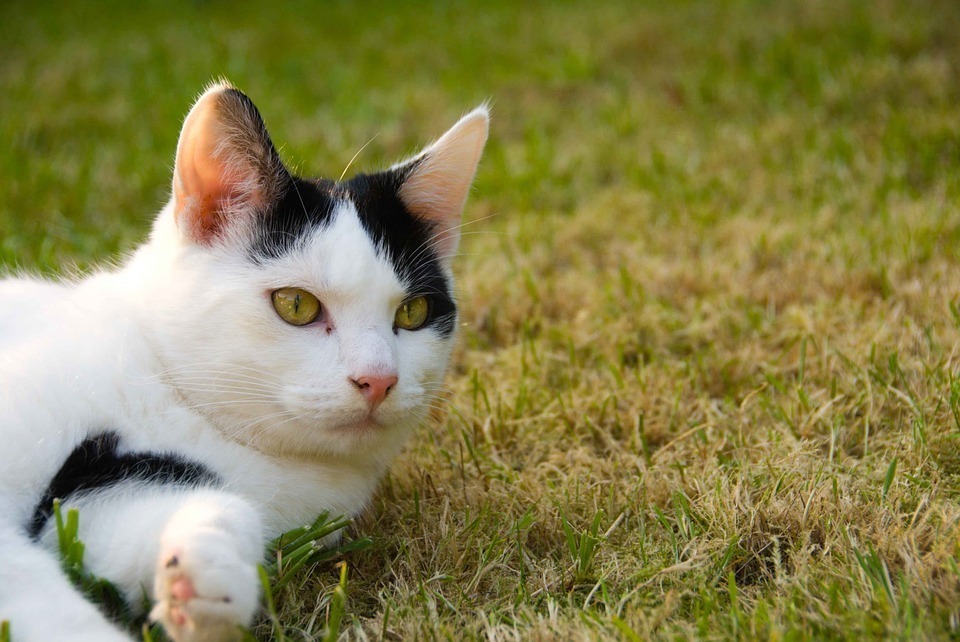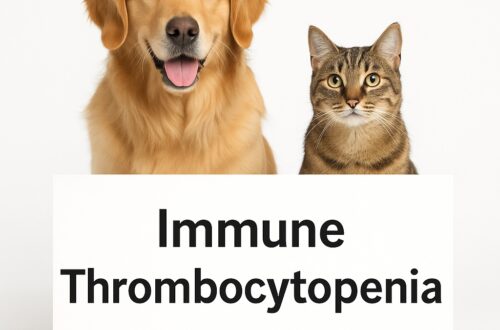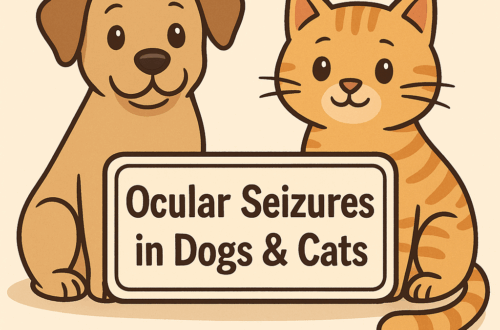Can you imagine straining so much during defecation that you prolapse your rectum? Perhaps that’s too personal a question, but for some dogs and cats the possibility is real. This week’s post is dedicated to the medical predicament we call rectal prolapse, and I hope you find the information intriguing. Happy reading!

Rectal Prolapse – What is it?
To understand what a rectal prolapse is, one first needs to have basic understanding of relevant anatomy. Food enters the gastrointestinal tract (GIT) at the level of the mouth. After being chewed, food travels through the esophagus into the stomach. From there it passes through the small intestine and large intestine. From the large intestine, feces pass into the rectal where they are stored until an animal defecates them through the anus. A rectal prolapse is protrusion of the full thickness of the rectum through the anus.

Rectal prolapse is most common documented in patients with either gastrointestinal and/or urogenital straining. Straining appears to weaken the various anatomical structures that support the rectum, allowing the rectum to prolapse through the anal orifice. Common causes of gastrointestinal straining are constipation, gastrointestinal parasites (i.e.: giardia, hookworms, coccidia), foreign bodies in the GIT, and masses and other anatomic abnormalities in the rectum and/or anus. Causes of urogenital straining include urinary bladder inflammation and infection, urinary bladder stones, dystocia (difficult birth), and prostatic diseases.
Rectal Prolapse – What does it look like?
Any dog or cat can develop a rectal prolapse. Young animals with gastrointestinal parasites are over-represented. Manx cats, as well as aBeagles and Boston Terriers, more commonly develop rectal prolapses compared to other breeds. Pet parents often report observing their pet strain to defecate.Following defecation, rectal tissue can be seen. With incomplete prolapses, the tissue will ultimately subside. With complete prolapses, a tubular mass will be seen consistently protruding through the anus. Acutely, the prolapsed tissue appears bright red. With chronic exposure to air, the rectal tissue turns blue or black and often becomes ulcerated.

Rectal Prolapse – How is it diagnosed?
The diagnosis of a rectal prolapse is relatively straightforward. A tubular structure protruding through the anus is a prolapse until proven otherwise. The larger challenge is determining the cause of a pet’s excessive straining that contributes to the development of a rectal prolapse. A veterinarian will perform a complete physical examination, including a rectal examination, to identify problems like rectal masses and perineal hernias. Furthermore, some non-invasive testing will be recommended, including:
- Blood/urine testing looking for metabolic abnormalities
- Fecal examination to screen for gastrointestinal parasites
- Abdominal imaging (i.e.: radiography/x-rays, sonography) to look for GIT masses, prostate abnormalities, urinary bladder issues, etc.
- Colonoscopy to look for masses and/or foreign bodies in the rectum and/or anus
Pet parents may find it helpful to partner with aboard-certified veterinary internal medicine specialist to develop a logical and cost-effective diagnostic plan.
Rectal Prolapse – How is it treated?
The most important facet of treating a rectal prolapse is identifying what caused the prolapse in the first place. Failure to complete a proper diagnostic investigation and treat an underlying problem will lead to lack of successful management.
If the prolapsed tissue is still red and viable, the ultimate goal is to replace the tissue in its normal position. A veterinarian will initially gently clean the prolapsed tissue, and then they will coat the tissue a special fluid (i.e.: hypertonic saline, mannitol, 50% dextrose) that reduces swelling to allow the tissue to be put back into place. Once the prolapsed tissue is back in its proper anatomic location, the veterinarian will place a special temporary stitch (called a purse string) that encircles the anus to prevent re-prolapse. This unique stitch is left in place for 5-10 days.During this time period, feeding a low residue diet and administering stool softeners can be quite helpful to reduce straining. If the rectum prolapses again upon removal of the purse string stitch, then further invention – typically a surgery called a colopexy – should be considered.
If the prolapsed tissue is devitalized, then replacing it in proper position as described above should not be performed. Rather, it is essential the tissue be surgically removed. This surgery is called a rectal resection and anastomosis and should only be performed by one with experience performing. Pet parents will likely find it helpful to collaborate with aboard-certified veterinary surgeon.
The take-away message about rectal prolapse…
Rectal prolapse is a potential complication of gastrointestinal and/or urogenital caused by a myriad of disorders. Diagnosis is relatively straightforward but identifying the cause of excessive straining is of paramount important for reducing the likelihood of recurrence. Treatment typically involves tissue care to ultimately relieve the prolapse, but some patients require surgery.
To find a board-certified veterinary internal medicine specialist, please visit the American College of Veterinary Internal Medicine.
To find a board-certified veterinary surgeon, please visit the American College of Veterinary Surgeons.
Wishing you wet-nosed kisses,
CriticalCareDVM







We have male shepherd,7yrs old w\ torn anal fissures so bad that his entire anus is ripped to a BIG WHOLE !!! We had him completely cleared up on MEDS from our vet and a cone on him but he will NOT leave it alone. He constantly licks at it.!!!!!
Thank you for your message. I’m so sorry your dog is coping with such a problem right now. It sounds like you’re referring to peri-anal fistulas that are very common in German Shepherds. See the following link for more info: https://criticalcaredvm.com/perianal-fistula-dogs-major-pain-butt/
You may find it helpful to partner with a board-certified veterinary internal medicine specialist to help your fur baby. Ask your primary care doctor for a referral – all 3 of you can collaborate to maximize the likelihood of your pet living a happy and comfortable life. It sounds like you’re doing a great job so far!